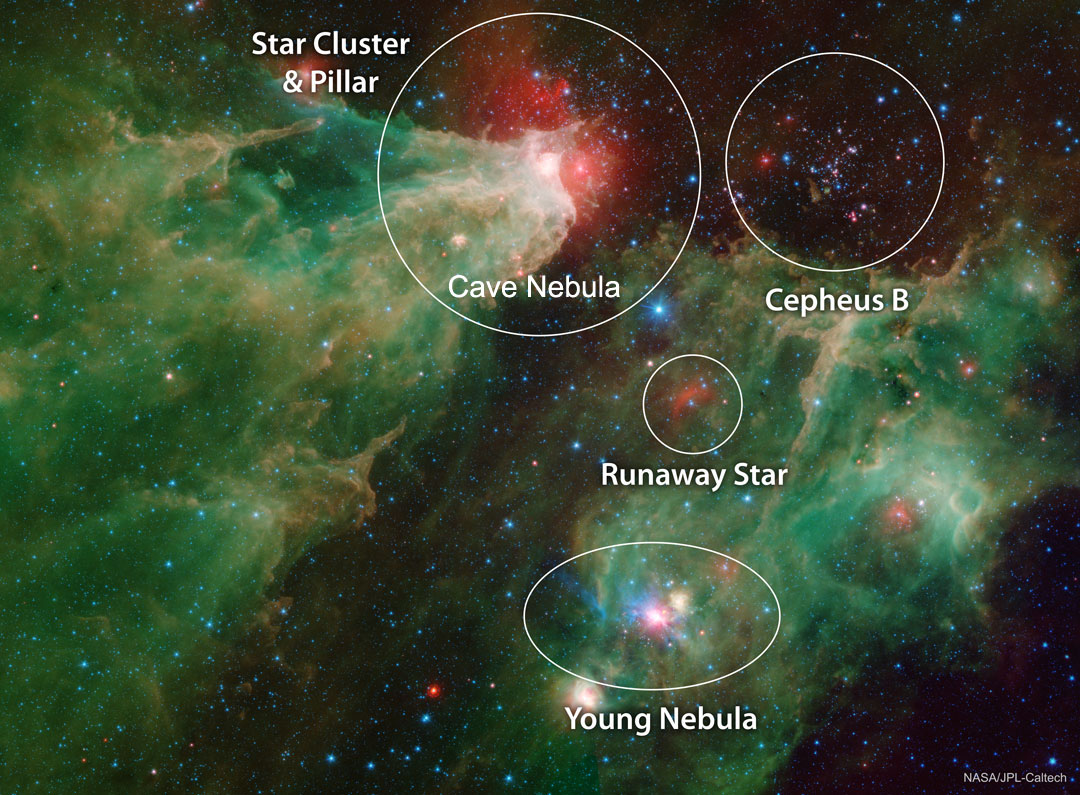2019 June 11
斯皮策太空望远镜在红外光下拍摄的洞穴星云
图片来源:NASA, JPL-Caltach, Spitzer Space Telescope
说明:洞穴星云的内部和周围区域发生了什么?为了找到答案,美国航天局斯皮策太空望远镜以四种颜色的红外光观测了这个在光学下黑暗的恒星形成区。编录号为Sh2-155的洞穴星云在红外光下非常明亮,不仅呈现了星云内部气体和尘埃柱的细节,而且还有明亮星团的细节,它们都位于这幅影像的顶部附近。这个洞穴入口附近的红色辉光是由受到明亮年轻恒星照耀的尘埃所产生的。该星云的右侧是仙王座B,它是一个由同一团气体和尘埃云先前形成的星团。仙王座内其他引人注目的恒星也在红外光下可见,包括那些位于影像底部、更加年轻的明亮星云,以及一颗位于影像中央附近、推出一道弓形激波的红色速逃星。该区域的跨度约50光年,位于仙王座方向、距离我们约2,500光年远处。
The Cave Nebula in Infrared from Spitzer
Image Credit: NASA, JPL-Caltach, Spitzer Space Telescope
Explanation: What’s happening in and around the Cave Nebula? To help find out, NASA’s orbiting Spitzer Space Telescope looked into this optically-dark star-forming region in four colors of infrared light. The Cave Nebula, cataloged as Sh2-155, is quite bright in infrared, revealing details not only of internal pillars of gas and dust, but of the illuminating star cluster too – all near the top of the image. The red glow around the Cave’s entrance is created by dust heated by bright young stars. To the right is Cepheus B, a star cluster that formed previously from the same cloud of gas and dust. Other interesting stars of Cepheus come to light in infrared as well, including those illuminating an even younger nebula toward the image bottom, and a runaway star pushing a bow shock, tinged in red near the image center. This region spans about 50 light years and lies about 2,500 light years toward the constellation of the King of Aethiopia (Cepheus).




